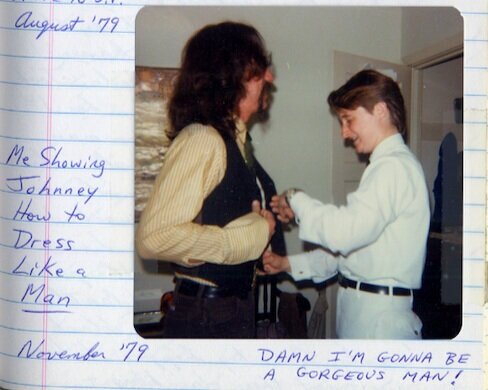A Legacy of Pride
To help mark our anniversary, we invited some early members and contributors to the GLBT Historical Society to tell us about one project or collection of which they are particularly proud. Their answers are below.
SUSAN STRYKER, EXECUTIVE DIRECTOR, 1999-2003
There are so many things that I feel proud of regarding my time at the GLBT Historical Society—processing the Lou Sullivan collection and curating the Saint Harvey exhibit stand out in my mind—but the single most important would have to be the work of transitioning the organization from all-volunteer to professionally staffed. I think that was an important accomplishment that helps us preserve our history long-term.
Paula Lichtenberg, Founding Member
I was an “accidental” founding member of the Historical Society. I was in the San Francisco Public Library doing research on women’s suffrage, when I came across Del Martin and Phyllis Lyon at the elevator. They asked me if I was going to the Historical Society meeting. I hadn’t planned to, but I tagged along with them and got very interested in the organization and wound up serving much of the first decade or so on the board and as co-chair, writing for the newsletter, organizing programs, etc. After I retired about ten years ago, I volunteered in the museum, at the desk and as a docent.
I am personally most proud of co-curating (with Bill Lipsky) the exhibit “Faces From the Past: LGBT people in California Before World War I.” This permanent exhibit is part of “Queer Past Becomes Present,” the permanent exhibition on display at the Society’s museum in the Castro.
Gerard Koskovich, Founding Member
I'm particularly proud of something that's often overlooked in part because it can't be tied to a single event or object or collection yet is reflected in all of them. What impresses me the most is the way our communities and our allies have come together across nearly four decades to support and advance the collective process of historical knowledge production. With a constant desire to honor the diversity of LGBTQ lives and stories in the past, we have created a living institution that helps us build a deeply rooted place in time. Reclaiming our heritage in this way gives us a vital resource for resisting erasure today and for imaging a future of greater liberty and greater belonging for trans and queer people.



